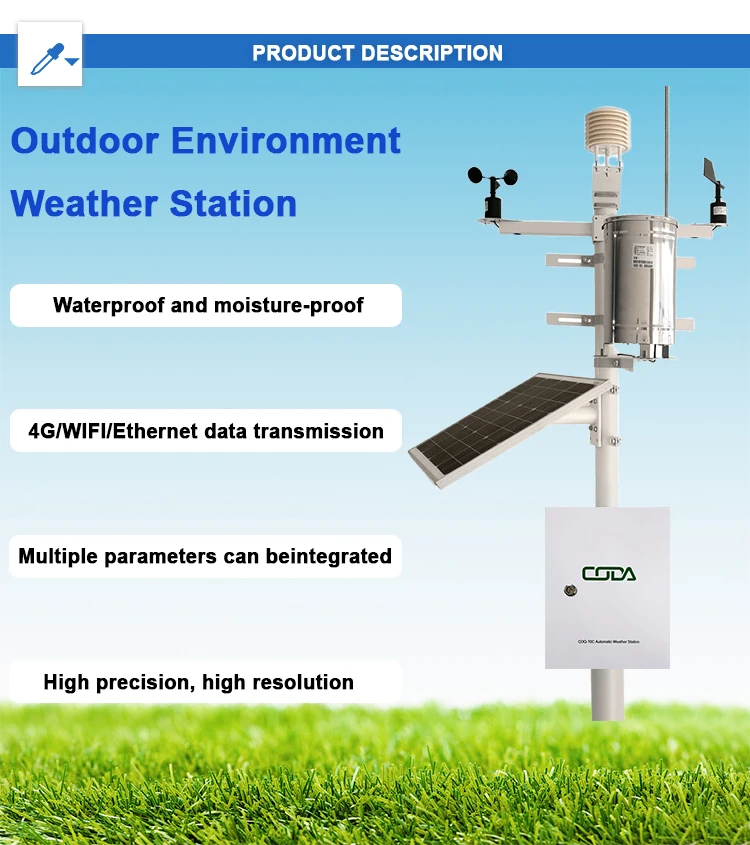Advantages and Disadvantages of Automatic Weather Stations

# Advantages and Disadvantages of Automatic Weather Stations
## Introduction
Automatic Weather Stations (AWS) have revolutionized the way we collect and analyze meteorological data. These advanced systems provide real-time weather information with minimal human intervention, making them invaluable tools for various industries. However, like any technology, AWS comes with its own set of advantages and disadvantages that users should consider.
## Advantages of Automatic Weather Stations
### 1. Continuous Data Collection
One of the most significant benefits of AWS is their ability to collect weather data 24/7 without interruption. Unlike manual weather stations that require human operators, AWS can operate autonomously, providing a continuous stream of accurate measurements.
### 2. High Accuracy and Precision
Modern AWS are equipped with sophisticated sensors that deliver highly accurate readings. These systems minimize human errors associated with manual observations and can detect subtle changes in weather conditions that might be missed by traditional methods.
### 3. Remote Monitoring Capabilities
AWS can be installed in remote or hazardous locations where human observation would be difficult or dangerous. Data can be transmitted wirelessly to central monitoring stations, allowing meteorologists to track weather patterns in real-time from anywhere in the world.
### 4. Cost-Effective in the Long Run
While the initial investment in an AWS might be substantial, these systems prove cost-effective over time. They reduce labor costs associated with manual data collection and require minimal maintenance compared to traditional weather stations.
### 5. Rapid Data Processing and Distribution
Automatic systems can process and distribute weather information almost instantaneously. This rapid data transmission is crucial for weather forecasting, agricultural planning, and emergency response systems.
## Disadvantages of Automatic Weather Stations
### 1. High Initial Costs
The sophisticated technology and equipment required for AWS come with a significant price tag. This initial investment can be prohibitive for small organizations or developing countries with limited budgets for meteorological infrastructure.
### 2. Technical Complexity and Maintenance
AWS require specialized knowledge for installation, calibration, and maintenance. Technical malfunctions can lead to data loss or inaccuracies, and repairs often need skilled technicians, which may not be readily available in all locations.
### 3. Power Dependency
Most AWS rely on continuous power supply, either from the grid or backup batteries/solar panels. Power outages or equipment failures can disrupt data collection, potentially missing critical weather events.
### 4. Limited Flexibility in Sensor Configuration
While some AWS allow for customization, many come with fixed sensor configurations. This can limit their adaptability to specific monitoring needs or make it difficult to upgrade components as technology advances.
### 5. Potential Data Gaps During Malfunctions
Unlike manual stations where observers might notice and compensate for equipment issues, AWS malfunctions can go undetected for extended periods, leading to significant data gaps that may affect weather analysis and forecasting.
## Conclusion
Automatic Weather Stations offer numerous advantages that have transformed meteorological data collection, providing continuous, accurate, and timely weather information. However, their high costs, technical requirements, and potential vulnerabilities should be carefully considered when implementing these systems. The decision to use AWS should be based on specific needs, available resources, and the importance of uninterrupted data collection for the intended application. As technology continues to advance, many of the current disadvantages are likely to be mitigated, making AWS even more valuable tools for weather monitoring and research.